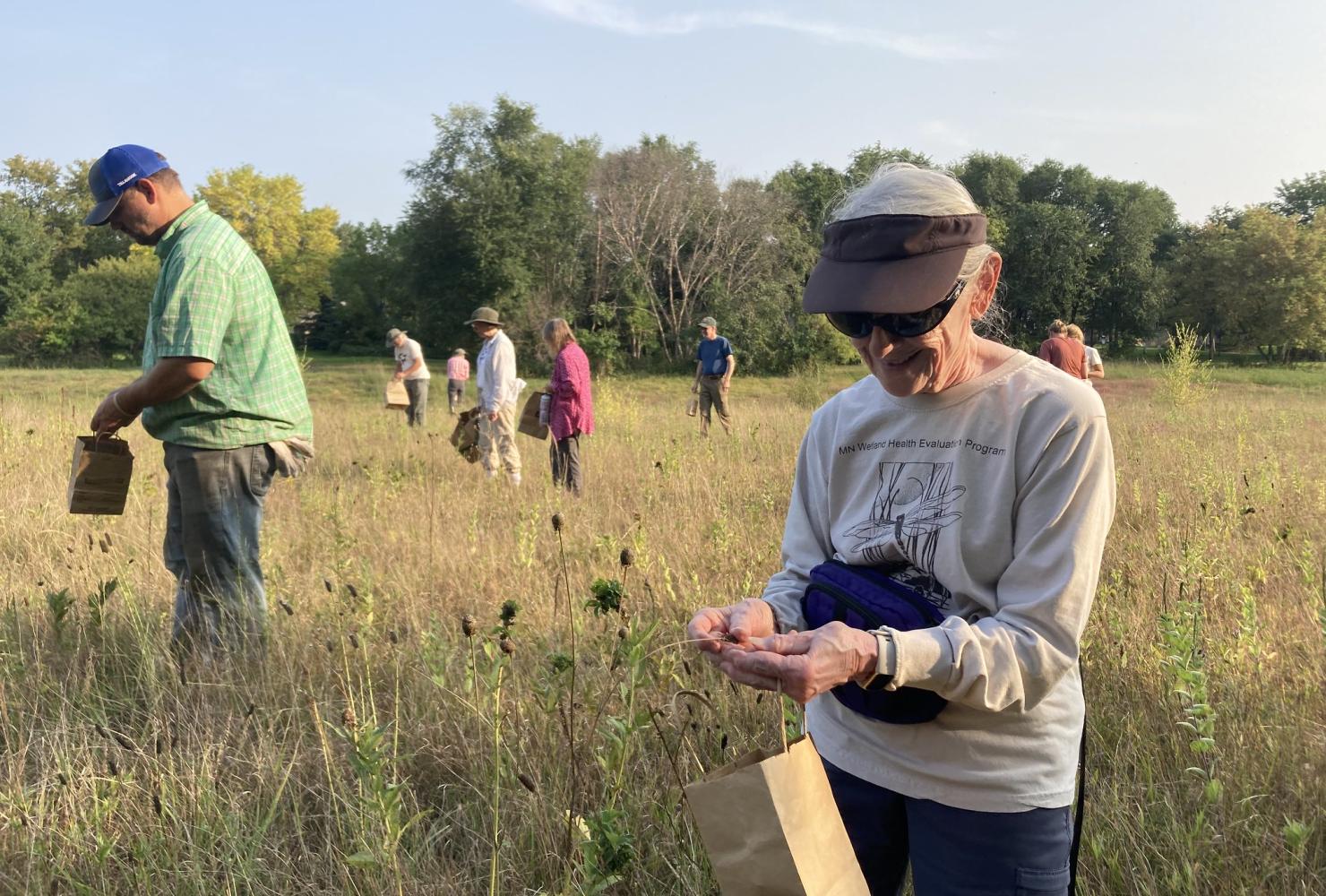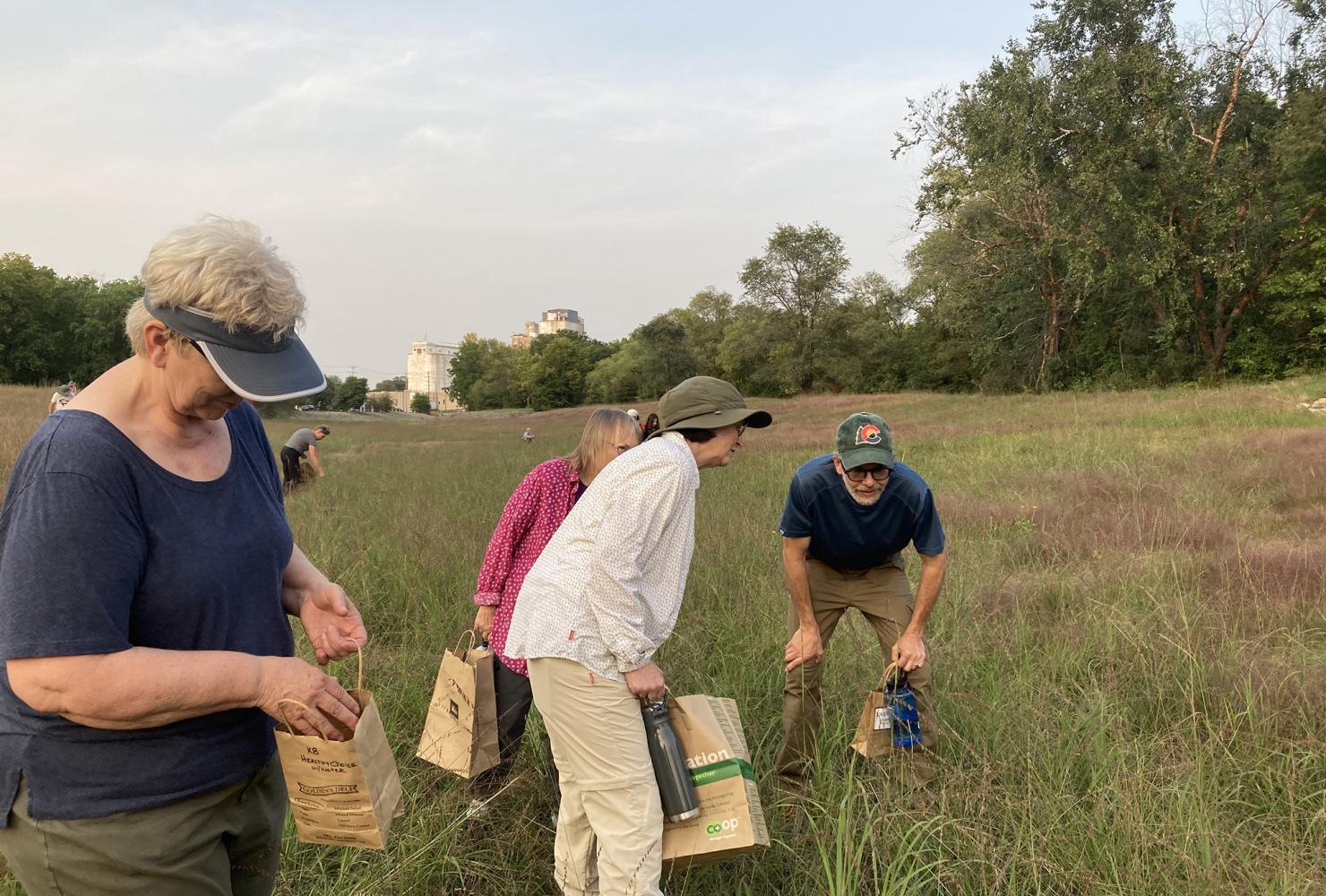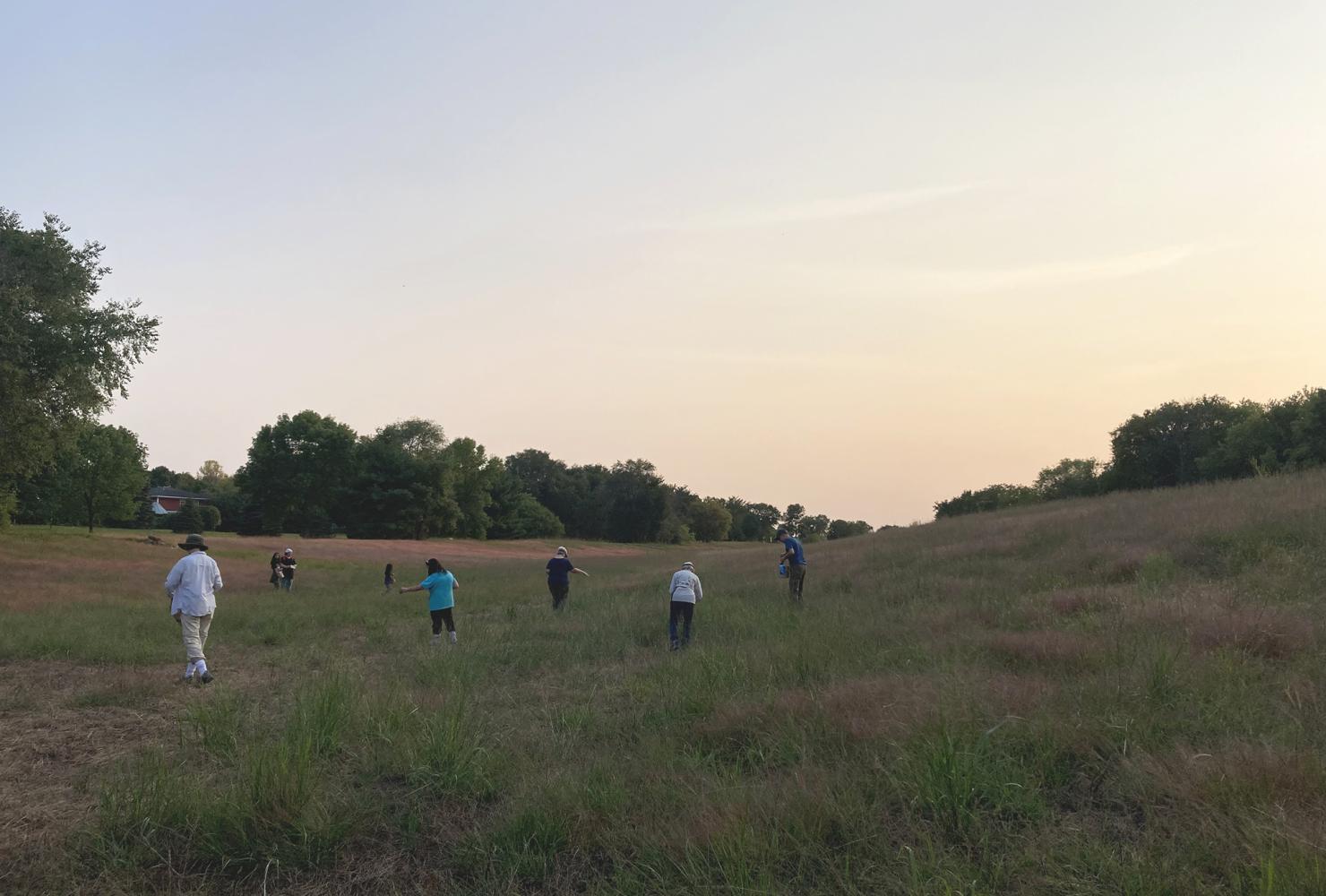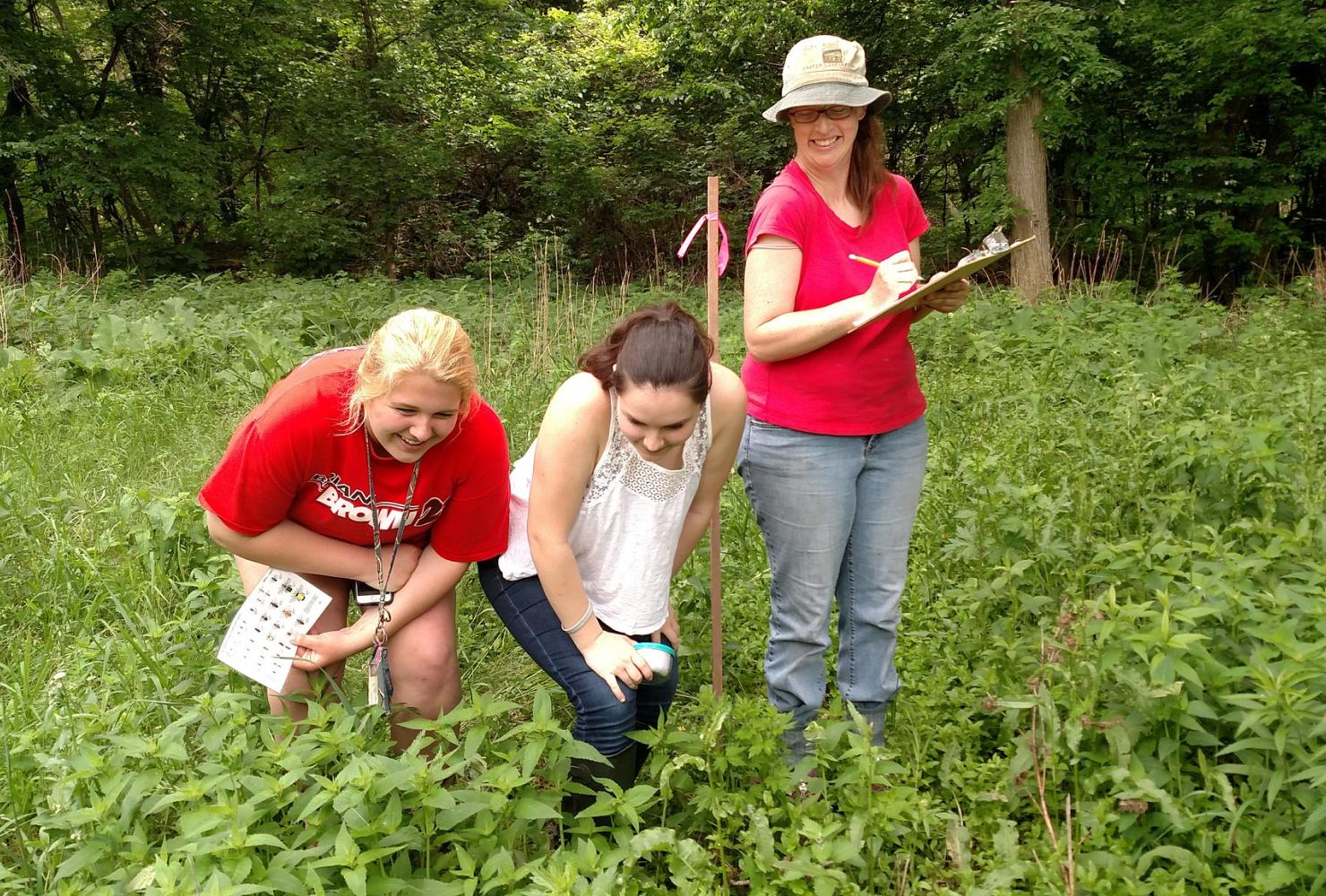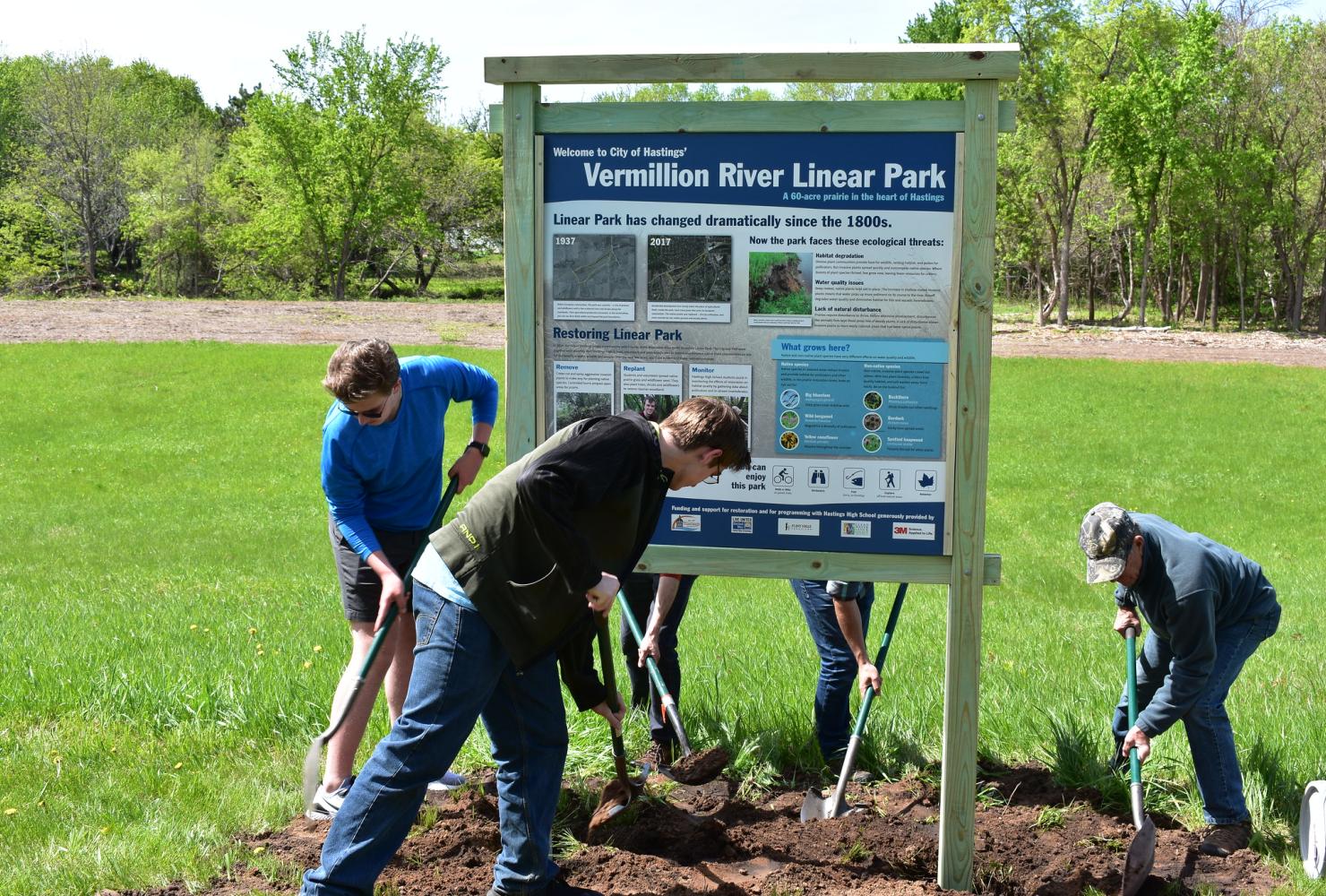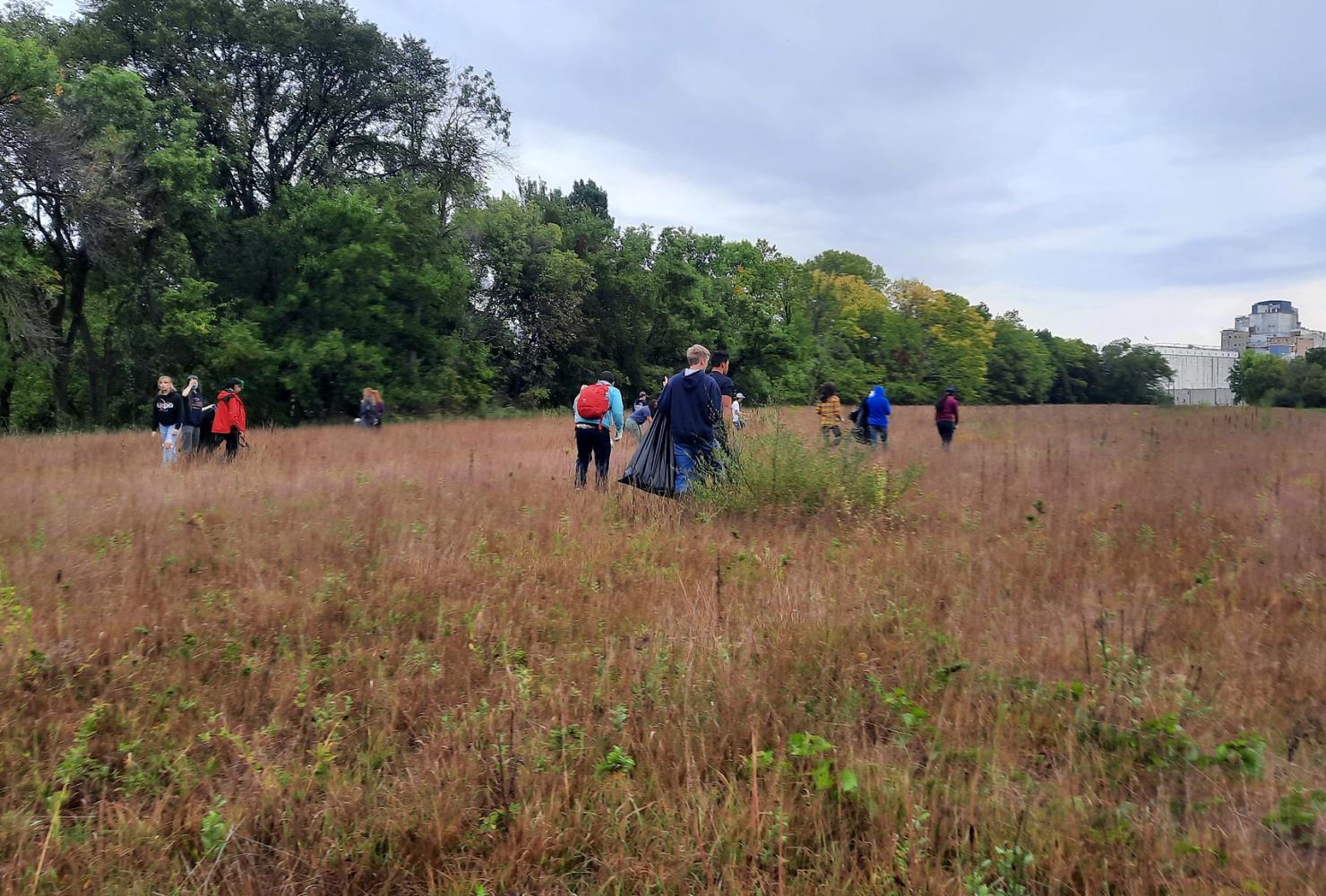Vermillion River Linear Park
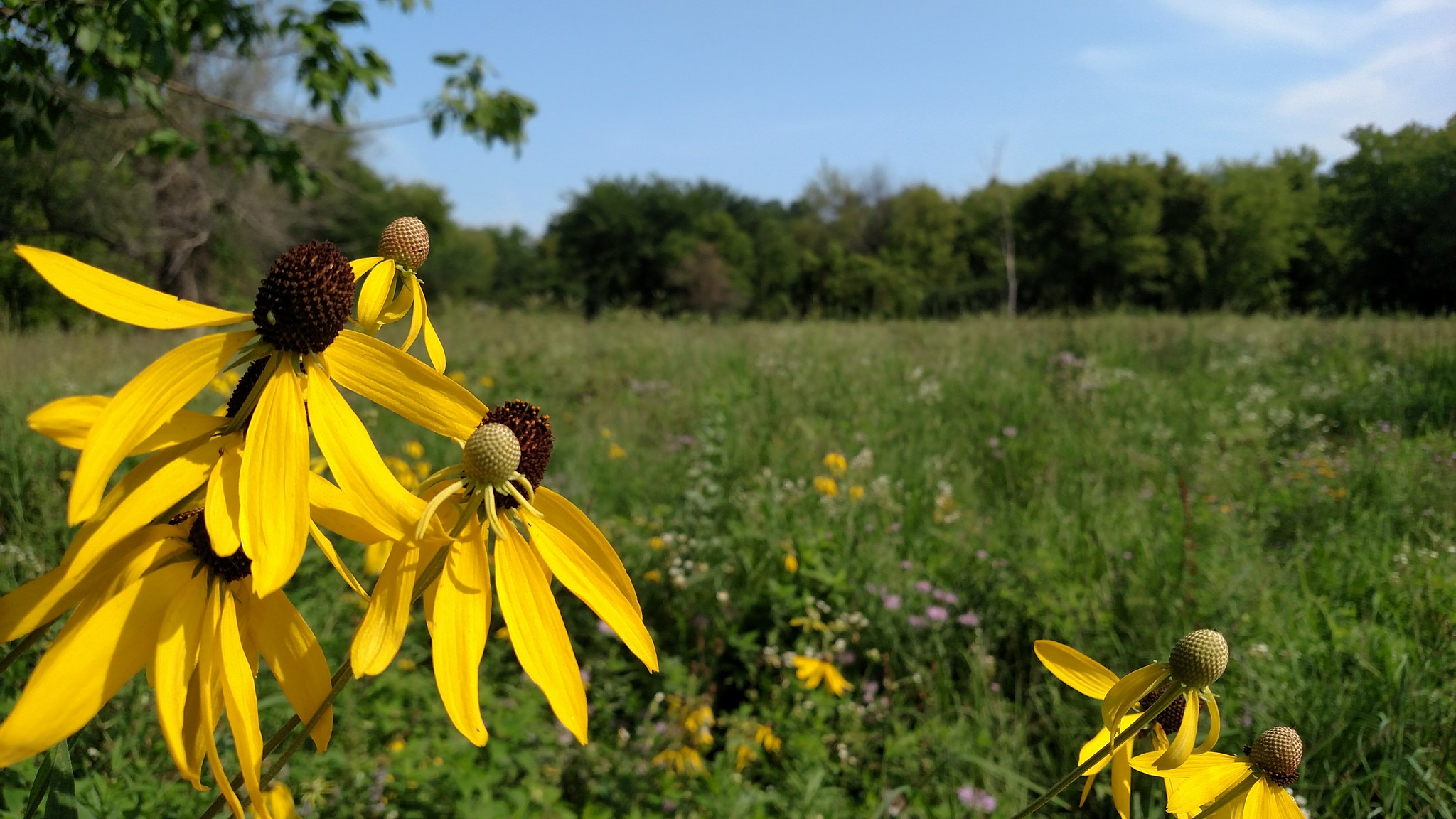
Located along the Vermillion River and the Greenway trail in Hastings, this park's connection to the river and historical roots as a prairie have led us to work with local students and partners to restore its diverse habitats.
Where is Vermillion River Linear Park?
This City of Hastings park is located south of downtown Hastings on Dakota County Road 47. The park stretches for three-fourths of a mile along the banks of the Vermillion River, a 60-mile-long stream that runs through Scott and Dakota Counties before flowing east to enter the floodplain of the Mississippi River.
Our restoration work at Vermillion River Linear Park connects with other FMR projects at Old Mill Park, Vermillion Falls Park, Hastings Scientific and Natural Area and Gores Pool Wildlife Management Area. Together these projects create a significant habitat corridor that links the prairies and woodlands to the west with the diverse Mississippi floodplain to the east.
The public is welcome to visit Vermillion River Linear Park. See the City of Hastings Parks Department's website for more information.
Our work here takes place on Dakota homelands. Learn more.
What's special about Vermillion River Linear Park?
Vermillion River Linear Park, as its name indicates, is a long, linear, 60-acre park set along nearly 3/4 mile of the Vermillion River in Hastings. Park users can follow the meanders of the river throughout the park and walk or bike along the main paved trail that runs through almost 50 acres of restored grasslands and 11 acres of the Vermillion's floodplain forest.
The park's interaction with the river makes for diverse habitat. The woodlands that have filled in along the river in the last century showcase spring ephemeral wildflowers like Virginia bluebells. In the summer the restored prairie is home to an array of grassland plants that like the sandy soil of the riverbanks, including spotted bee balm and wild lupine. These plants host an array of pollinators like hairy rove beetles, black and yellow lichen moths and furrow bees.
This site falls within the Metro Conservation Corridors, a regional land protection plan of the Minnesota Department of Natural Resources. The park is also mapped within the Mississippi River Greenway Corridor, a regional land protection plan developed by FMR and local cities and townships, part of a chain of city parks that traverse the Vermillion River through Hastings.
Our work at Vermillion River Linear Park
Vermillion River Linear Park has an interesting past. Based on historical public land surveys, we know that the site was prairie prior to European colonization. Many changes have occurred since then. A linen mill was built and operated on the north side of the Vermillion River in the late 1800s and early 1900s near the present-day Highway 61 bridge. And a city dump was located at the site's western end for many years. Much of the site was farmed and grazed. These uses and the rapid development of the city greatly impacted the original prairie and the river.
Eventually many entities recognized the need for its restoration. FMR's involvement at Vermillion River Linear Park started with our development of a Natural Resource Management Plan, which calls for a phased restoration of the site over several years. Our plan includes removing introduced, undesirable plants like invasive elm, buckthorn, spotted knapweed and smooth brome. The plan recommends stabilizing undercut riverbanks with bio-engineering techniques. The work also includes seeding native plant species to restore prairie and reintroducing historical fires that maintained the prairie in the form of prescribed burns.

Prescribed burns help keep woody plants at bay, allowing the prairie's grasses and wildflowers to thrive.
We have implemented many of these restoration activities since 2015. After the initial removal of invasive plants in the site's grassland areas, we seeded an array of native prairie plants adapted to the fluctuating moisture conditions of the park.
A bypass channel, which protects nearby neighborhoods from flooding, was constructed in 1979 and lies at the center of the park. The channel can be inundated with flood flows when the river is high, so we selected plant species tolerant of wet soils and periods of drought to revegetate the channel.
The restoration of the forested areas near the river includes gradual removal of invasive plants like common buckthorn and garlic mustard. Once these species are managed, thinning of box elder and other less desirable trees will open the canopy and allow for a healthy herbaceous plant community.
We've also stabilized the river's streambanks using bundles of cedar removed from prairies. This "cedar revetment" protects the banks from the erosion of high river flows, creates in-stream habitat for fish and other aquatic life, and also collects sediment from the river, which will eventually allow plants to establish.
Thank you, volunteers!
Volunteers have been integral in our work at this site. Since 2015, we've held annual public and group volunteer events to remove invasive plants; plant native sedges, wildflowers and shrubs; and gather seed from the restoration to redistribute in areas of the park that have lower plant diversity.
FMR has also partnered with Hastings High School field biology class to monitor the restoration's effects on pollinator populations and to design educational signage along the park's trail, and with the Hastings Environmental Protectors group to host cleanups and other events.
Find out more and get involved
- Volunteer with us to restore places like this.
- Learn more about how Hastings High School was involved with this restoration.
- Contact FMR project lead Leah Weston.
Partners and funders for our work at Vermillion River Linear Park
This work was made possible by the Lessard-Sam Outdoor Heritage Fund, the US Fish and Wildlife Service, United Way of Hastings, the City of Hastings, Hastings Environmental Protectors, and by our generous donors like you!
Where we work
FMR maintains over three dozen habitat restoration and land protection sites in the metro area.
